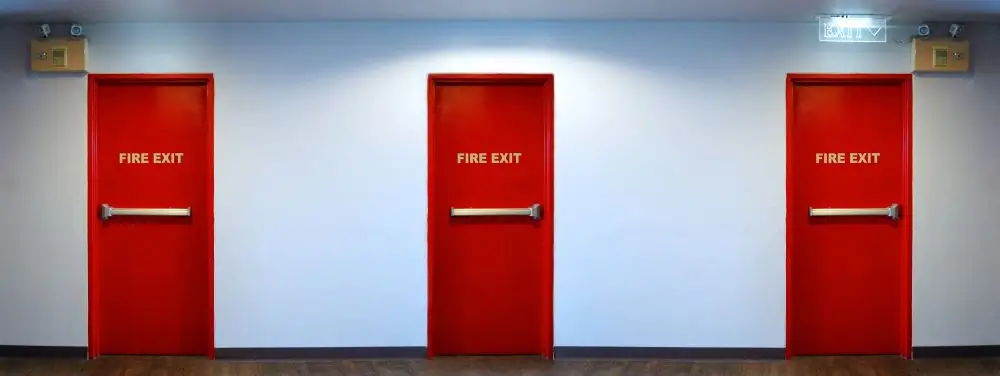Fire doors form a crucial part of a building’s passive fire protection strategy, preventing the spread of fire and smoke between compartments. At first glance, a fire door may look like any standard interior door, but its components are specifically designed for life safety. Here’s what you need to know.

1. Panel
Fire doors are typically made with a solid timber core, but other materials such as steel, aluminium, or gypsum may also be used. The thickness of the panel varies depending on the required fire rating. For example:
- An FD30 (30-minute fire door) is usually 44-45mm thick.
- An FD60 (60-minute fire door) is approximately 54mm thick.
Some panels include vision panels made from specialised fire-resistant glass, such as integrity (E) glass. This type of glass ensures visibility while maintaining compliance with fire safety regulations, making it a popular choice for tailored residential architecture solutions and commercial spaces.
2. Fire & Smoke Seals
The gaps around a fire door must be no wider than 4mm to prevent flames and smoke from spreading to adjacent rooms. To achieve this, fire-rated expanding foam, sealants, and intumescent seals are used. Intumescent seals expand under heat, filling gaps to restrict the flow of flames and gases, while smoke seals block smoke and hot gases, preserving air quality during an evacuation.
These features are especially critical in functional and stylish commercial spaces, where large numbers of occupants rely on efficient fire safety measures.
3. Ironmongery
The hardware fitted to a fire door plays a significant role in its functionality. Key components include:
- Hinges: A minimum of three fire-rated hinges is required to prevent warping during a fire.
- Closers: Door closers ensure the door automatically returns to its closed position, maintaining its effectiveness as a fire barrier. Closers also offer secondary benefits such as noise control and privacy.
- Locks and Latches: Fire-rated options include roller catches, rim latches, mortice locks, and deadlocks. Many suppliers offer fire door kits containing all the necessary components for easy installation.
In residential and commercial properties alike, properly installed and certified hardware ensures that fire doors perform effectively during emergencies.
Why Fire Rated Doors Matter
Fire rated doors are an essential feature of any building’s safety strategy, protecting lives and property. Whether you’re designing a home or a commercial building, understanding fire door components is key to creating safe, compliant, and functional spaces.
Take the Next Step
Fingerprint Studios specialises in designing and implementing fire safety solutions tailored to residential and commercial projects. Ready to enhance your space with fire rated doors?
- Call: 02392 354 041
Let’s create interiors that breathe life into your project.